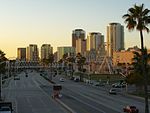Exide lead contamination

Exide is one of the world's largest producers, distributors and recyclers of lead-acid batteries. Lead-acid batteries are used in automobiles, golf carts, fork-lifts, electric cars and motorcycles. They are recycled by grinding them open, neutralizing the sulfuric acid, and separating the polymers from the lead and copper. In the US, 97 percent of the lead from car batteries is recycled - which is the highest recycling rate for any commodity. Most states require stores to take back old batteries.Since 2010, operations at seven Exide lead-acid battery plants have been linked to ambient heavy metal levels that posed a health risk to the environment and thousands of residents in neighborhoods surrounding the Exide plants. Exide has been found to be a significant source of lead emissions and/or contamination in Crescentville, Philadelphia (1920 - 1978); Los Angeles County; Frisco, Texas; Muncie, Indiana; Salina, Kansas; Bristol, Tennessee; Reading, Pennsylvania; and Forest City, Missouri.
Excerpt from the Wikipedia article Exide lead contamination (License: CC BY-SA 3.0, Authors, Images).Exide lead contamination
South Indiana Street,
Geographical coordinates (GPS) Address Nearby Places Show on map
Geographical coordinates (GPS)
| Latitude | Longitude |
|---|---|
| N 34.005277777778 ° | E -118.19333333333 ° |
Address
South Indiana Street 2742
90058
California, United States
Open on Google Maps









